Last Chance to Catch NYC's Holiday Notalgia Train
We met the voices of the NYC subway on our nostalgia ride this weekend!


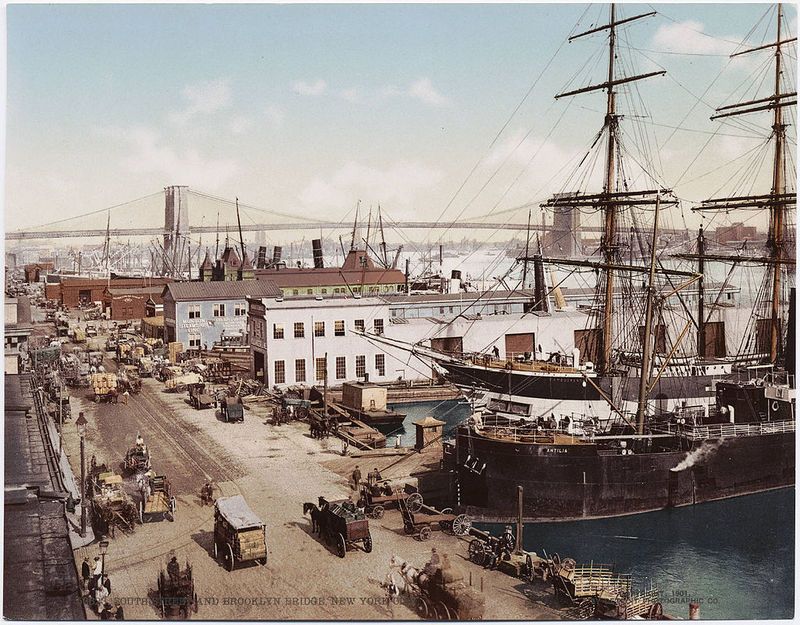
The Golden Age of New York City’s maritime history bears a few tarnished spots. While in the first half of the 19th century New York became America’s largest city, it boomed into a great global metropolis in the latter half. The South Street Seaport Museum’s main buildings on Fulton and Water Streets, located in what was then the Second Ward, are fine examples of the irrepressible commercial spirit that defined the first half of the 19th-century, when New York City rose to become America’s preeminent port and commercial city. But, as trade expanded and more sailors came through the area, the Fourth Ward, bordering the Second Ward, became home to New York’s vice district, a strange combination of commercial virtue and sin living side by side. In this list, we’ll explore that darker side of New York’s maritime history, with five wicked secrets, ranging from colorful personalities and addresses to the incredible odds that were overcome in order to build the Brooklyn Bridge.
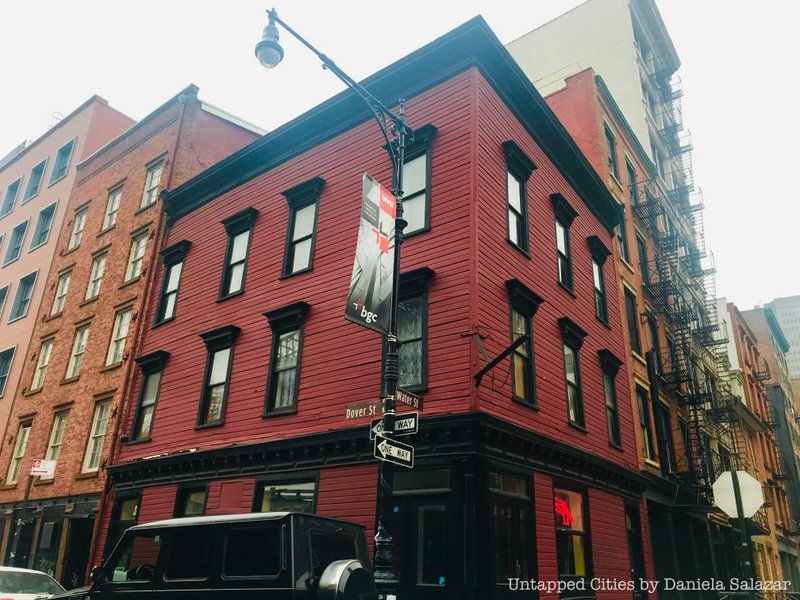
This little wood-framed building at 279 Water Street was once home to the former Bridge Café and perhaps the most wick South Street Seaport tale. Before Sandy, it was claimed to have been the longest-operating tavern in the city, The building reportedly dates back to 1794, though the Landmarks Preservation Commission dates it to 1801. In the 1850s, it was thought to be the site of the Hole-in-the-Wall. Owned by One-Armed Charley Monell, his name really says it all, and his two ‘glamorous’ lady bouncers, Kate Flannery and Gallus Mag.
Mag is the much better-known of the two. She stood six feet tall, filed her teeth to points, and kept a pistol at her waist. For those that displeased her, Mag allegedly had the interesting habit of biting off their ears, occasionally a finger, and pickling them in a large jar she kept behind the bar.
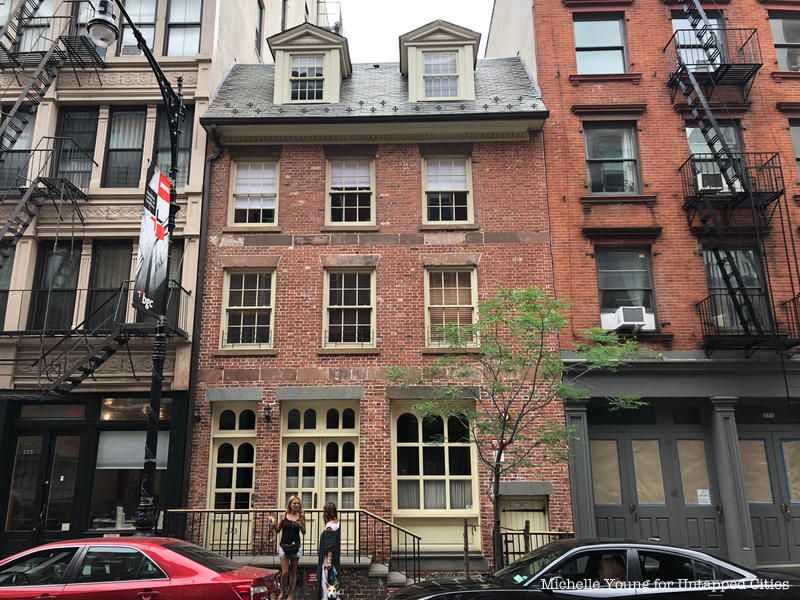
273 Water Street was originally built as a family home by the wealthy merchant and seafarer Captain Joseph Rose in 1773 when the area was considered a fashionable neighborhood. Ninety years later, it was home to Kit Burns’ Sportsman’s Hall. Down a winding passage behind the main bar at the front of the building was a second room with an amphitheater that could accommodate up to 400 people. Inside, it played host to illegal boxing matches where fighters wore no gloves.
Its most infamous events however were the rat pit killings. Wharf rats packed 50 to a cage were let loose into the area and then a weasel would be sent in. It was only when the fighting dogs were let in that the crowds would really go wild! Some of Burns’ prize dogs could kill 100 rats within a few minutes. On special occasions, Jack-the-Rat Jennings, Burns’ son-in-law, would bite the head off of a rat for a quarter. Luckily, the ASPCA helped put a stop to this wicked South Street Seaport activity. Burns was arrested for animal cruelty in 1870.

The dance hall and saloon that once stood at 304 Water Street was owned by a man that the newspapers called ‘the wickedest man in New York,’ Mr. John Allen. Allen, a large muscled man, opened his first saloon in 1850 after leaving the seminary where he had studied to be a pastor. What irony! His dance hall on Water Street was a three-story brick building with green and yellow shutters. Musicians played jigs and reels, while male patrons danced with one of the 20 or so women dressed in provocative low-cut bodices and skirts.
Most of Allen’s $100,000 fortune was made from the sale of liquor that the women would ‘suggest’ their dance partners buy for them. There were also rooms and cubicles available for more intimate activities. By the spring of 1869, the Fourth Ward would experience a radical change. The most infamous merchants of sin were either jailed, dead, or were put out of business. However, it was the construction of one of the most important structures in the City, the Brooklyn Bridge, that would have the most profound effect. John Allen’s dance hall was one of the numerous buildings torn down to make way for the approaches and anchorages of the Bridge, cutting the Fourth Ward in half.
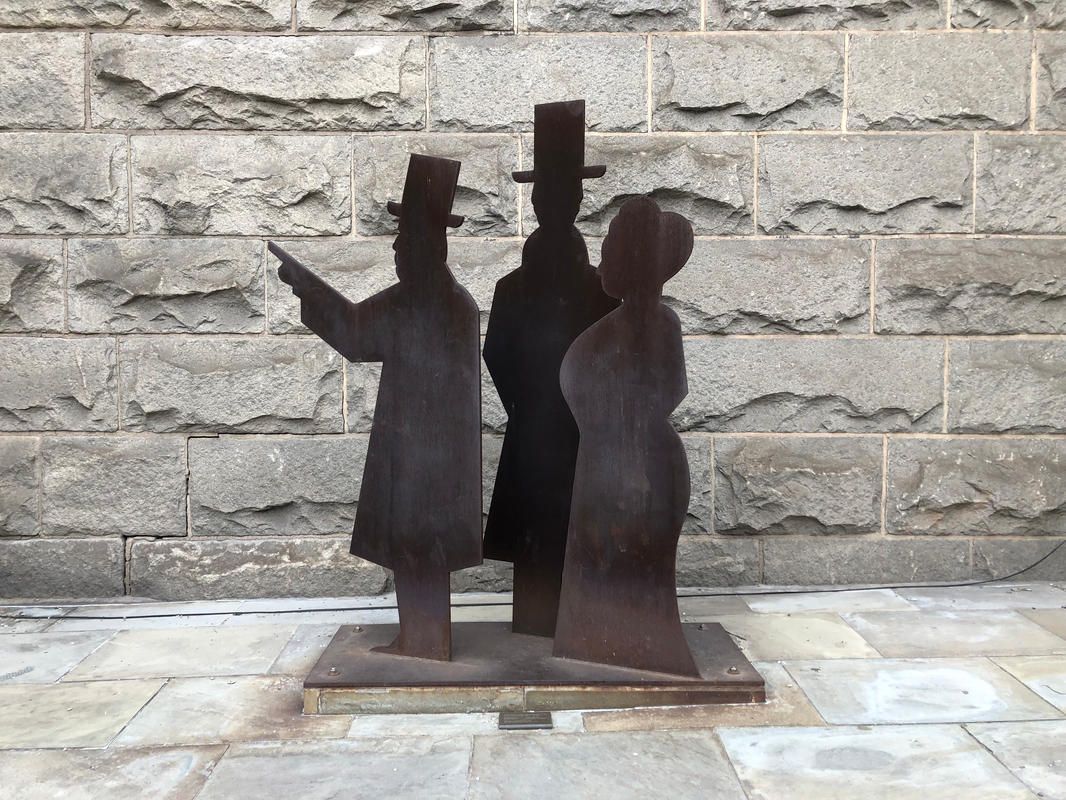
The construction of the Brooklyn Bridge’ was somewhat of a family affair. John Augustus Roebling was an innovative engineer and pioneer who designed the East River crossing. It would be the longest bridge in the world at the time, but he wouldn’t live to see it. While collecting measurements at a possible tower location near Fulton Ferry, his foot got stuck and crushed between a ferry and the dock. Doctors amputated some of his toes but Roebling refused further medical care, opting instead to try a trendy water-cure. In 1869, just a few weeks after the accident, Roebling died of tetanus. Roebling’s son, Washington, stepped up as Chief Engineer.
Washington, like his father before him, was also plagued by misfortune. In order to reach the bedrock below the river, massive caissons, basically giant diving bells, were built to enable workers to excavate the tower foundation sites underwater. Improper use of these caissons could lead to caisson disease, more commonly known as the bends. Their weight, wood structure, and use of pressurized air also made them prone to explosions and fire.
After a particularly long day below water in 1872, Washington rose to the surface and promptly passed out. After this incident, he became incapacitated and unable to return to the construction site. He would suffer from symptoms of caisson disease – paralysis, deafness, and partial blindness – for the rest of his life. The severity of the caisson cases experienced by workers impacted the bridge itself.
As opposed to the Brooklyn side bedrock, the Manhattan side bedrock proved to be much deeper than originally estimated. As work approached nearly 80 feet down, excavation had to stop – even though bedrock lay at least another 20 feet down. Far too many men were becoming ill. The result of this stunted digging is that the Manhattan tower technically rest on sand rather than bedrock. Roebling reassuringly noted that the sand hasn’t shifted in millions of years, so it should be good for a few million more…
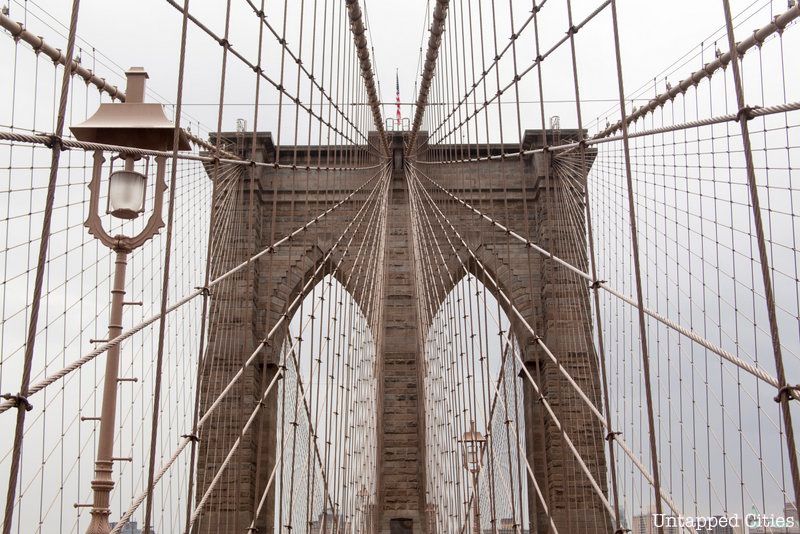
The laying of the cables would be the next most difficult and treacherous process in the Brooklyn Bridge’s construction. While the towers were being built, the approach ramps and anchorages were also being built. Each of the Bridge’s four cables is one long continuous length made up of 19 strands, which in turn each contain 278 separate wires. As each cable approaches the anchorage, the cables split back into 19 individual strands that are attached to the anchor chain that ends with a 46,000-pound star-shaped anchor plate at the bottom of the anchorage.
Before being bundled together into a single cable, each strand had to be laid across the entire span of the Bridge individually. In June 1878 one of the strands broke loose, taking part of the anchor chain with it as it grazed surrounding buildings, killed two men, and finished with the whole strand between the two towers plunging into the river and nearly hitting a passing ferryboat.
This article is written by William Roka, a historian with the South Street Seaport Museum and updated by Nicole Saraniero
Next, read about the Top 10 Secrets of the Brooklyn Bridge.
Subscribe to our newsletter